As awe-inspiring and remarkable as these creations can be, safety must always be the top priority when crafting and wearing them. Constructing cosplay armor demands a careful balance between realism and safety.
While we strive to create pieces that will transport onlookers to fantastical realms or distant galaxies, we must also ensure that our costumes comply with convention etiquette and safety guidelines. These regulations exist not only for our own safety but also for those around us who share our love for this vibrant subculture.
One of the many things cosplayers have had to become fluent in is understanding various materials and their properties – how they can be manipulated or combined to create stunning visuals without compromising personal wellbeing. Cardboard and foam core are often used in cosplay due to their lightweight nature; they are easy to work with while still providing a sturdy base structure for more complex designs.
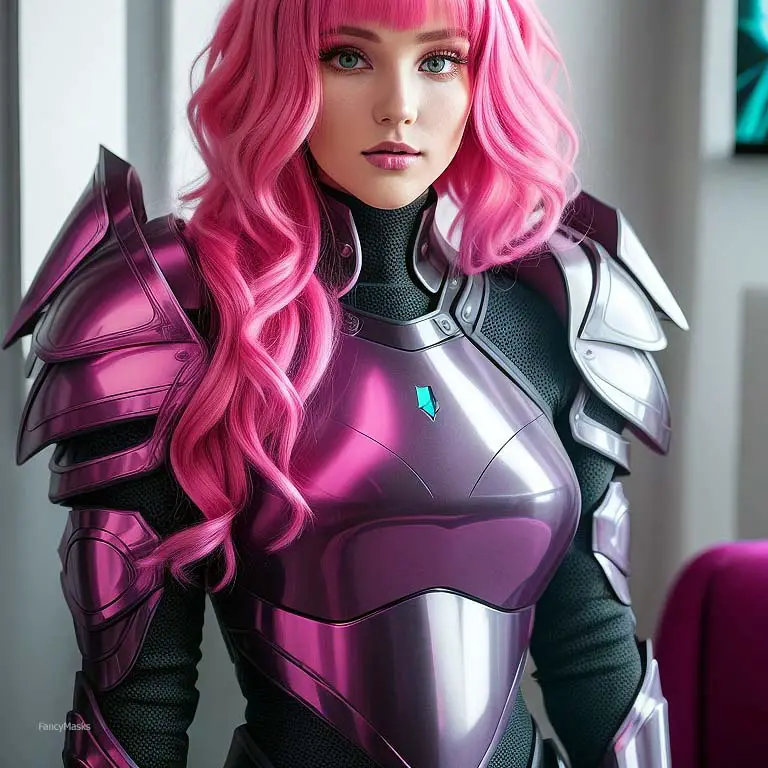
EVA foam is another popular choice due to its versatility – it can be cut, shaped, heat formed, glued – you name it! However, it’s important to remember that while these materials may appear harmless at first glance; they can become hazardous if not handled correctly or if certain precautions aren’t taken during assembly.
For instance, sharp edges should always be smoothed out to avoid scratches or cuts. Armor assembly instructions should stress attention-to-detail in terms of both aesthetics and safety aspects.
PVC pipes and Styrofoam have also found their place in armor crafting–each offers unique attributes beneficial for specific design elements within a costume piece. PVC pipes provide structural strength when needed while styrofoam allows cosplayers a medium that is light-weight yet capable of maintaining form under various conditions.
Worbla cosplay armor is another popular material among cosplayers due to its ease-of-use versatility – it’s as easily moldable as clay when heated but hardens into a durable plastic-like material once cool which makes Worbla ideal for creating detailed shapes without concern for breakage or damage during travel. Speaking of travel-friendly cosplay materials–resin has its niche carved out within the cosplay community too!
While somewhat harder to work with than other options due its need for careful mixing ratios (and necessitating good ventilation), once set this material offers unrivaled durability making it perfect choice those desiring high-gloss finishes on larger-scale pieces. Paper clay and polymer clay have likewise proved invaluable assets costume creation–their malleability allows creators sculpt intricate details impossible achieve conventional means however do remember oven-baking polymer clay requires caution avoid fumes potential fire hazards.

3D printed cosplay elements are advancing rapidly–they open up new possibilities precision detail customization not possible past however like any technology comes set challenges requiring specialized knowledge equipment use safely effectively so always best take time understand processes involved before diving headfirst! Wirework provides structural support where needed especially when comes fabric armor crafting allows fine details otherwise difficult mimic using other materials alone meanwhile wood props although heavier side offer authenticity durability given proper treatment prior convention attendance important check each venue’s rules concerning wooden items since some locations may restrictions place ensure public safety all attendees!
Remember these packing tips – ensure you package your armor well enough so it doesn’t break during transit but isn’t so well-packed you won’t get through weapons check at your destination convention! Always make sure each piece securely wrapped protected against potential damage dents scuffs during transit–plan ahead think strategically what order pack everything maximum efficiency space-saving considerations mind
The Potential Hazards of Wearing Cosplay Armor
While the idea of creating your own armor may sound exciting, you should also be aware of its potential risks. Crafting cosplay armor from various materials such as cardboard and foam core can be a fun and straightforward process.

However, these materials can potentially pose risks in certain scenarios at conventions. Sharp edges or protruding elements could cause injury to the wearer or other attendees.
You’ll want to ensure that all edges are neatly finished and secured is not just a matter of aesthetics but safety too. Armor assembly instructions might often advise on how to make the piece fit perfectly but seldom touch upon the safety aspects.
Convention etiquette requires cosplayers to respect others’ space – large or unruly props can disturb or unintentionally harm other convention-goers if not handled properly. Wirework in cosplay adds a certain realism and structure to armor pieces but also introduces potential risks due to their sharp ends which can easily pierce skin if not carefully managed.
In contrast, wood cosplay props add weight – they are heavy and could cause physical strain over extended periods of wear. The use of paper clay and polymer clay in costume creation is popular due to its versatility; however, one must always ascertain that any embellishments made from these materials are securely fastened since dislodged pieces could present a choking hazard to children present at conventions.
In terms of travel-friendly cosplay materials, it’s wise to opt for lightweight yet sturdy options like EVA foam for crafting your armor pieces—reducing both travel hassle as well as risk during assembly thereafter. Fabric armor crafting is another safe option as it softens impact compared with harder materials; this alongside PVC pipes used wisely or styrofoam elements contributes considerably towards minimizing potential harm both for you and those around you while enjoying conventions.
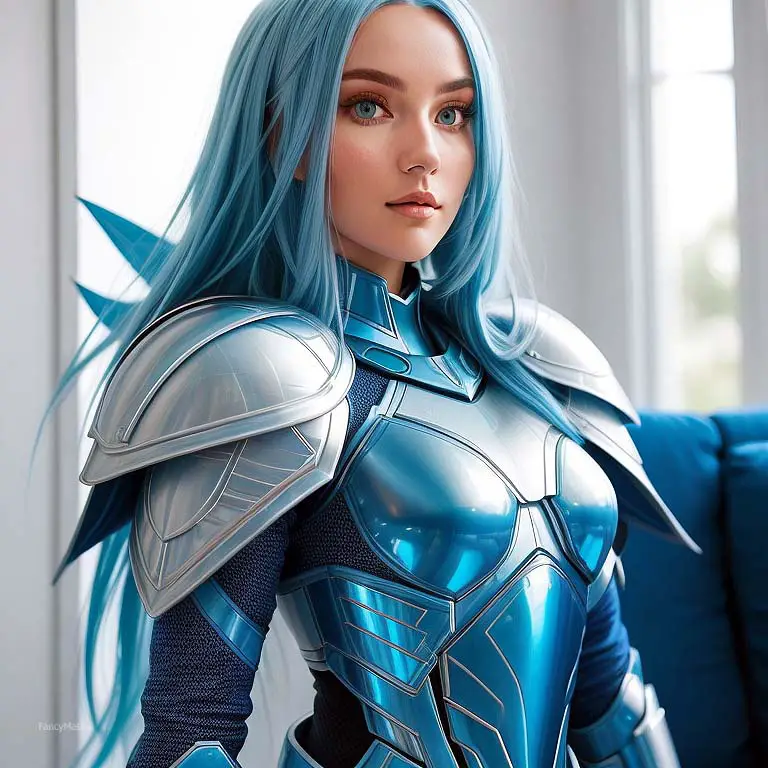
3D printed cosplay elements have been gaining popularity because they allow for intricate designs while maintaining light weight—however, small detachable parts must bear caution signs attached explicitly addressing choking hazards especially when children are around. Worbla resin armor crafting or using advanced materials like resin requires safety measures due to possible chemical reactions during costume creation; correct usage guidelines should therefore be adhered strictly ensuring no risk emerges in this otherwise rewarding process.
With all these said about safe cosplay materials remember that packing tips for cosplayers including storing sharp objects separately with proper padding reduces any chance of accidental injuries during transportation. Remember—a great deal goes into crafting an impressive piece of wearable art like Cosplay Armor—it’s important not only that it looks striking up close but also ensures complete comfort without compromising on safety norms despite being surrounded by bustling crowds at popular convention centers worldwide!
Preparing Your Cosplay Armor for Travel
Journeying to a convention with your meticulously crafted cosplay armor can feel like a daunting task. The prospect of your carefully made masterpiece getting damaged in transit is enough to send a shudder down any cosplayer’s spine.
With some careful planning and packing know-how, your EVA foam creations and wirework wonders can travel safely. The first step in preparing your cosplay armor for travel begins long before you even start crafting.
Choosing travel-friendly materials can save you a lot of hassle later on. Cardboard and foam core are lightweight options that are easy to transport but may lack durability compared to alternatives like Worbla or resin.

However, using these materials require skillful crafting techniques and also add substantial weight which may pose issues, especially if you’re flying. Consider materials such as EVA foam for crafting the main body of the armor as it’s both durable and lightweight—ideal for transportation purposes.
Paper clay or polymer clay can be used for creating intricate details as they’re moldable but harden up well once dried—just be sure to give them ample time to set before packing! 3D printed elements also provide another avenue for adding ornate details without weighing down the whole ensemble.
Beyond material choices, thoughtful design is key when crafting cosplay armor intended for travel. Aim for designs that allow pieces to be dismantled easily—a removable breastplate from the backplate is easier to pack than one solid piece!
You’ll also want to consider how those individual elements will assemble at the convention; have clear assembly instructions ready so you don’t end up with a cosplay puzzle at the venue! The art of packing cannot be understated when it comes to transporting cosplay gear safely.
For an extra layer of protection during transit, wrap each piece individually with bubble wrap or soft fabric before placing them in their designated compartments within your luggage—this is particularly important if you’re carrying intricate wirework pieces or props made out of wood. Incorporating PVC pipes into your design allows armor pieces to slide onto them, making it easy for secure storage and transportation while also ensuring no damage occurs during transit.
On another note, Styrofoam can serve as a protective barrier between fragile pieces or used as separators within your suitcase. All said and done, remember that conventions are spaces meant for fun and creativity; adhering strictly towards convention etiquette ensures everyone has a good time!
Keep safety in mind throughout all stages—right from choosing safe cosplay materials during creation till smart packing tips—your masterpiece deserves nothing less! From fabric armored characters originating from fantasy realms to larger-than-life robotic suits from popular anime series’, every cosplayer should feel empowered by their creations rather than being burdened by its logistics.

Travel Tips for Cosplayers
Traveling to conventions as a cosplayer is an adventure in and of itself, presenting unique challenges that require forethought and planning. Crafting cosplay armor that’s not only show-stopping but travel-friendly involves a keen understanding of materials and design.
Cardboard, foam core, and EVA foam are great choices as they are lightweight and flexible.
EVA foam cosplay crafting has become quite popular due to its versatility; it can be cut into virtually any shape desired and when heated, it becomes malleable for sculpting. Moreover, this material tends to bounce back from minor dings and it’s also easy to repair with some hot glue if mishaps occur on the road.
Polymer clay or paper clay are also ideal because they dry hard yet remain relatively lightweight making them perfect for those intricate details on your armor. Wirework in cosplay is another technique that can add depth without adding too much weight or bulkiness.
Keep in mind that these pieces must be packed carefully during transit so have bubble wrap or soft fabric on hand. Now let’s talk about more advanced materials like Worbla and resin armor crafting, wood props, PVC pipes or styrofoam for costume accents.
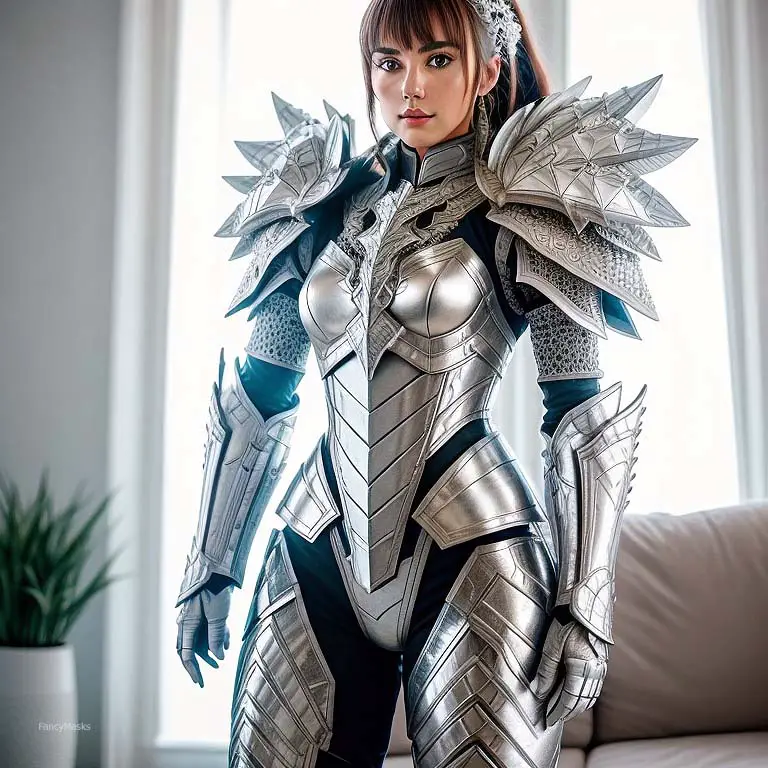
These need special attention while packing and transporting due to their rigidity or bulk. It’s essential to plan how these elements will break down for travel—modular designs work best since they allow large items to be disassembled into smaller parts.
3D printed cosplay elements are another innovation we’re seeing more of in the world of convention-going cosplayers’ arsenal due to their customizable design options while being relatively light yet sturdy enough for travel conditions. As a rule of thumb when traveling with your cosplay gear: pack carefully with plenty of padding around delicate pieces; label all parts clearly so things don’t get lost amidst the chaos; have assembly instructions on hand if you’ve got a complex setup; adhere strictly to convention etiquette – respect other people’s costumes and personal spaces at all times; always follow safety guidelines regarding the size & sharpness of props allowed at different events.
Remember: crafting safe cosplay materials isn’t just about reducing risk during wear—it extends all the way through packing tips for cosplayers right down to safe conduct at conventions themselves! So whether you’re a fan of fabric armor crafting or leaning towards 3D printed parts in your designs—with planning & care—you can ensure your epic ensemble arrives unscathed ready for showtime!
Unpacking and Assembling Cosplay Armor at the Convention
The journey of crafting your cosplay armor doesn’t end at home, but continues all the way to the convention hall. It’s an intimate process, that often involves materials as varied as wood, fabric, EVA foam, wirework and more.

The assembly of your chosen cosplay is indeed an act of love and dedication. Unpacking your armor can be a nerve-wracking experience; after all each piece is a creation borne out of countless hours of labor.
It’s a task not unlike unraveling an intricate tapestry or revealing a meticulously constructed puzzle. Yet there are certain steps that can be employed to ensure that armor arrives and unpacks without any unpleasant surprises.
Firstly, upon securing your accommodations at the convention site, find a suitable space for unpacking. This could be in your hotel room or designated area in the convention center itself.
It’s crucial to have enough space so nothing gets damaged during this process. Secondly, take care not to rush while retrieving individual armor pieces from their protective layers – they deserve patience and respect for their contribution to your overall ensemble.
Packing tips for cosplayers often suggest organizing items according to when they’ll need to be assembled – this allows for an efficient layer-by-layer unpacking without having to dig through everything simultaneously. Assembling cosplay armor at the convention can seem daunting especially if you haven’t rehearsed it beforehand.
But don’t worry! It can actually turn into quite a fun event with friends assisting you in piecing together meticulous creations made from materials like cardboard and foam core or perhaps more advanced materials such as Worbla or resin.
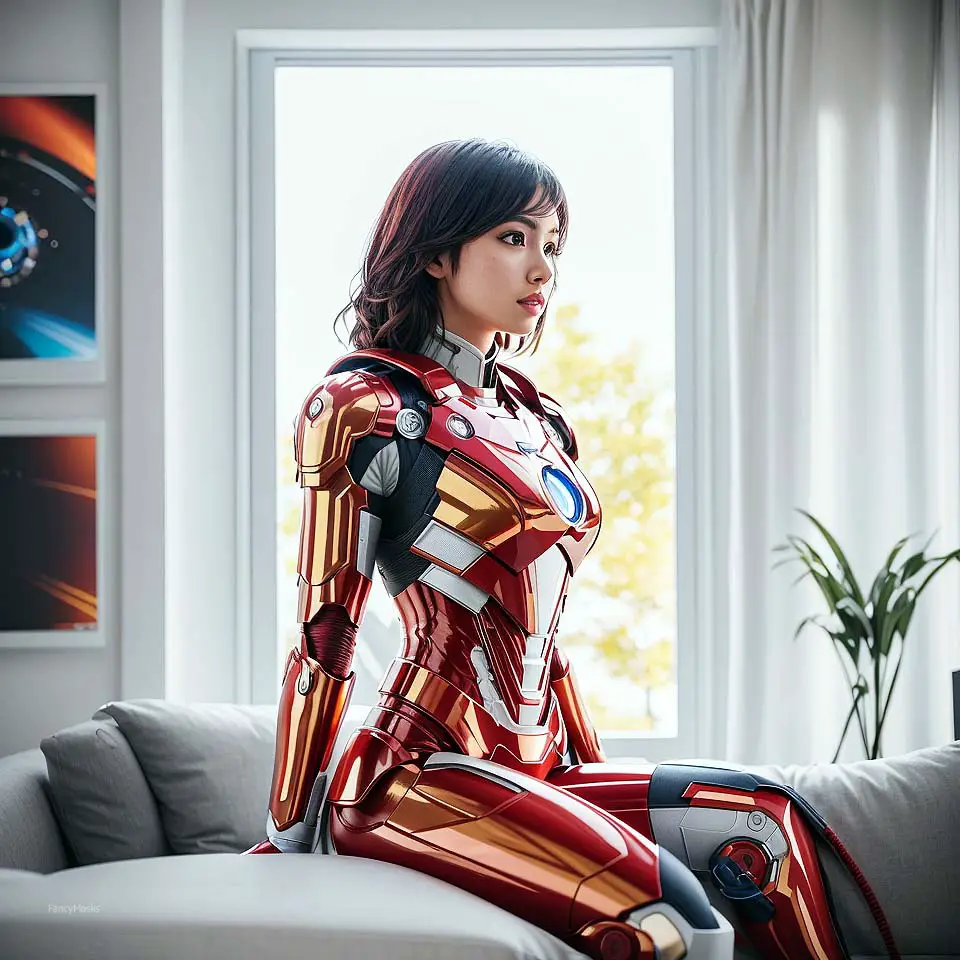
It becomes a theatrical performance where every rivet attached or wirework connection made adds another layer of realism to the character being portrayed. And remember, assembly instructions don’t come only from manuals or online tutorials; often times they are inscribed within each handcrafted element including those 3D printed elements you so painstakingly designed.
Of course one must always consider safety guidelines within these communal spaces too – Convention etiquette demands respect towards fellow cosplayers and their own works-in-progress by maintaining a safe distance during assembly while also being mindful about potentially dangerous materials such as PVC pipes which may suddenly roll off tables! And finally when it comes down to choosing safe cosplay materials in order make travel-friendly costumes remember that lightweight options such as paper clay polymer clay fabric even styrofoam offer great versatility while enhancing safety both during transportation and wearing them around crowded venues.
Making Safe Cosplay Armor: Material Choices
One of the most critical aspects of crafting cosplay armor is picking out safe materials. You’d want something durable, flexible, and can withstand the boisterous atmosphere that is inherent to any convention. Fortunately, there’s a wide array of options available to cosplayers.
Cardboard and foam core are a crowd favorite among novice cosplayers. They are inexpensive, lightweight, and easy-to-find materials which make them ideal for anyone starting in the world of cosplay crafting.
However, while they’re great for practicing your skills or for creating big but light props, you might want to consider sturdier materials if you’re heading for crowded conventions where your gear could get knocked about easily. This is where EVA foam comes into play.
EVA foam cosplay crafting has gained traction in recent years due to its versatility and durability. It’s fantastic for creating pieces that mimic the look of heavy metal without weighing you down or posing any risk to other attendees if accidentally bumped into – a prime example of following cosplay safety guidelines.

For more intricate designs that require finer details like ornate embellishments or dramatic textures, paper clay and polymer clay can be used in conjunction with EVA foam or even on their own. More advanced options include Worbla and resin which can be sculpted into detailed armor pieces with a solid feel that conveys authenticity without risking safety at conventions.
Convention rules calls for weapons to be ‘peace-bonded,’ meaning they should be clearly non-functional – these materials adhere wonderfully to these guidelines while still granting your ensemble an impressive appeal. Wood is another excellent choice if handled correctly – it’s great for sturdy props like staffs and swords but must always be treated well so as not to splinter or crack, which could potentially harm yourself or others around you.
Wirework can add an elegant touch particularly when paired with fabric armor crafting techniques – lightweight yet durable gauntlets of wire mesh covered with fabric can truly elevate your costume’s visual impact while remaining safe in bustling convention environments. 3D printed elements are also increasingly popular due to their ability to replicate complex designs exactly as envisioned by the creator; just ensure they’re sanded down properly so there won’t be any sharp edges that might catch onto someone.
Using PVC pipes and Styrofoam might seem unconventional but they too have found their place in the realm of cosplay creation – from frameworks for larger structures such as wings or additional limbs; it’s all about how creative one gets! Packing your crafted gear safely ensures it survives travel – bubble wrap will become your best friend during this stage!

Travel-friendly cosplay materials include anything lightweight yet durable enough not break under pressure during transport – remember conventions may involve rough travels depending upon location! From cardboard and foam core beginnings right through advanced 3D printing techniques today – material choices matter immensely when creating safe cosplay armor both according to personal preference as well as within established convention safety parameters!
Crafting with Cardboard and Foam Core Board
One might be surprised at how versatile, affordable, and travel-friendly cardboard and foam core can be when crafting cosplay armor. These materials are lightweight, easy to work with, and if used cleverly, can make an impressively convincing set of armor for your character.
Don’t underestimate the value of these safe cosplay materials – that Spartan helmet or Captain America shield can indeed start as a simple piece of cardboard! When cutting out shapes from cardboard or foam core for your armor pieces, remember that layering is key.
Building up multiple layers gives the illusion of depth and weight without actually adding much physical mass or inconvenience; this should be a relief especially when considering convention etiquette where large cumbersome costumes may impede others’ enjoyment of the event. Another great tip is to embrace texture; score your material with a craft knife to create lines or ridges before you apply paint – this will give a more realistic metallic effect.
Now let’s talk about shaping: both cardboard and foam core typically aren’t very flexible in their standard state. Luckily, there’s an easy solution!

Heat them gently with something like a hairdryer until they become pliable—then bend them into whatever form you need (carefully to avoid burns). You might want some sort of mold on hand; it could be as simple as a bowl if you’re making something round or cylindrical like gauntlets.
Let’s not forget about durability: while these materials are sturdy enough for display purposes on their own, they might need some reinforcement if they’re going to survive an entire day at a convention with lots of movement and interaction. One popular method is papier-mâché – it’s cheap and adds considerable strength once dried properly.
Alternatively, crafters have had success covering their pieces in several layers of mod podge or even using fiberglass resin (although do take note that safety guidelines must always be followed when using such materials).
With some crafting savvy and patience, these easily accessible materials can transform into believable armor worthy of any champion warrior or intergalactic hero. They’re definitely worth considering given their cost-effectiveness, ease-of-use during crafting phases—and perhaps most importantly—their travel-friendly nature which makes packing for conventions far less stressful than more unwieldy alternatives.
Utilizing Clay and EVA Foam in Cosplay
As a cosplayer, you’ve likely experimented with all sorts of materials to create your dream armor. Clay, for instance, is an excellent medium for crafting intricate details and textures. Both paper clay and polymer clay are widely used in costume creation; they’re easily moldable and, more importantly, lightweight once dried – a crucial factor given you’ll be wearing the piece around the convention floor all day.
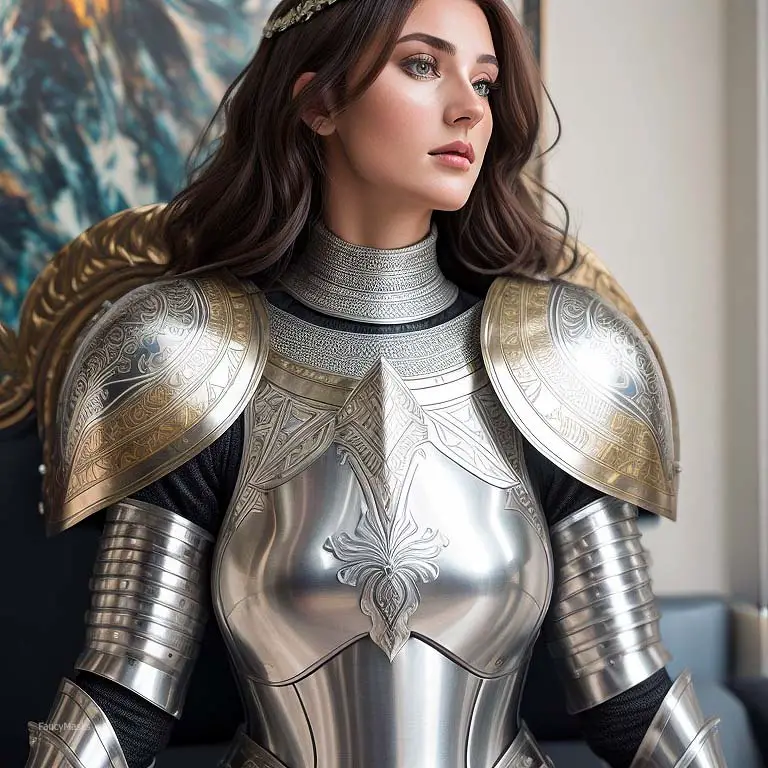
Paper clay is particularly useful for finer details due to its smooth finish when dry while polymer clay maintains a higher level of durability but requires baking to harden. Regardless of your choice between paper or polymer clay, always ensure that your armor pieces adhere to cosplay safety guidelines; sharp edges or protruding elements can pose hazards not just for you but also fellow attendees.
On the other hand, EVA foam remains the go-to material in cosplay armor crafting due to its versatility and low cost. It’s safe cosplay material that’s easy to cut into any shape yet durable enough to withstand wear and tear during conventions.
More so than with clay, assembling an EVA foam replica requires patience as well as careful planning which often involves sketching out designs on paper before cutting them out from the foam sheet. Once you’ve got your cutouts ready, heating up EVA foam allows it to be bent into desired shapes before it cools down again; this process is repeated until every piece is accomplished as per your armor assembly instructions.
To create a metallic look – common in most armors – use metallic spray paint or rub n’ buff waxes over sealed EVA foam pieces. But keep this in mind: both these crafting methods are time-consuming and labor-intensive so make sure you’re fully committed before diving headfirst into projects involving these materials!
Remember also that convention etiquette calls for respect towards all cosplayers regardless of whether their costumes involve complex wirework or simple cardboard and foam core construction. While both these materials bring their unique advantages in creating fantastic props and armor bits: they present certain challenges when it comes time for traveling – especially if attending conventions far from home!
So always keep travel-friendly cosplay materials (like PVC pipes or Styrofoam) at hand whenever possible since they’re light yet sturdy enough to survive long journeys without damage! Packing tips for cosplayers also suggest carrying along-assembly tools (like glue guns) as well as extra material should repair work need doing on-site during conventions.
Advanced Materials: Worbla, Resin, and Wood
In the realm of cosplay armor crafting, there exist materials that offer a blend of durability, realism, and sophistication. These advanced materials – namely Worbla, resin, and wood – are often favored by seasoned cosplayers due to their impressive finishes.

Worbla is a safe cosplay material that is adored by many cosplayers for its malleability and forgiving nature. This thermoplastic sheet material can be heated with a heat gun to become pliable and then manipulated into any shape.
Once cool, it retains its form, making it ideal for intricate armor pieces. The beauty of Worbla lies in its ability to be reheated multiple times without losing its integrity – perfect for those moments when your design doesn’t quite go as planned first time around.
It’s also travel-friendly; you can pack Worbla armor pieces flat in your luggage without fear of them breaking or bending out of shape. Resin is another top pick among crafting cosplay armor enthusiasts.
Epoxy resin can be used to create robust elements with a glossy finish resembling glass or plastic; perfect for gem-like accents on your costume or even as the main body of an armored piece. However, caution must be exercised when working with this material since it involves chemicals that should not come into contact with the skin or eyes during the curing process.
Be sure to follow cosplay safety guidelines by wearing gloves and working in well-ventilated areas when using resin. Wood may seem like an unlikely choice for cosplay props due to its weight and difficulty to work with relative to other materials like EVA foam or PVC pipes.
However, wood provides an unmatched authenticity that other materials lack — nothing quite replicates the feel and sound of real timber. Wood cosplay props add a level of realism unparalleled by other substances but remember they may not always adhere to convention etiquette rules because they can be heavy and potentially dangerous if mishandled.
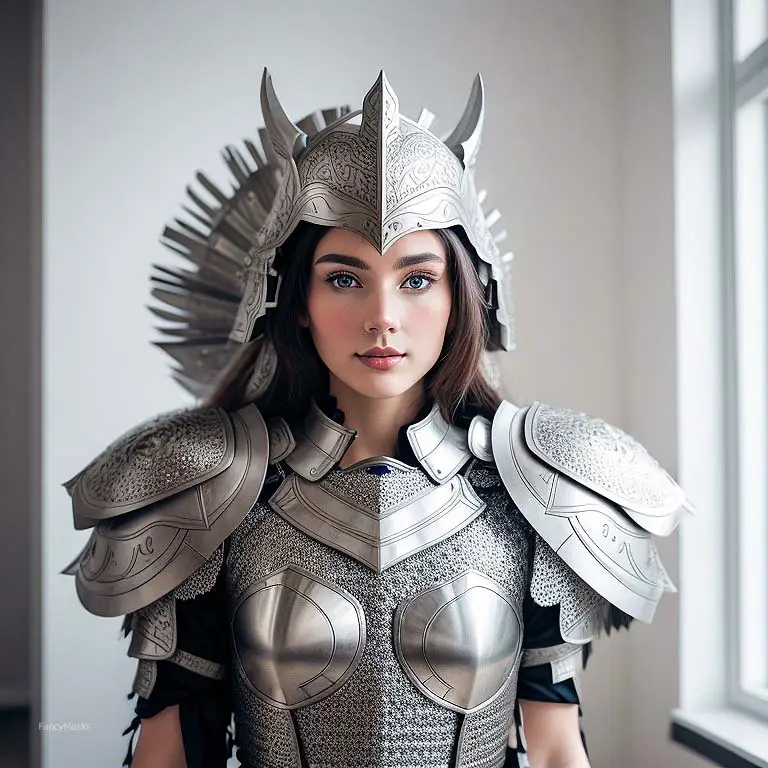
For those seeking a more eco-friendly approach could consider cardboard and foam core boards as alternatives; these materials are lightweight yet sturdy enough for basic armor assembly instructions. Advanced options such as Worbla, resin, and wood offer sophisticated solutions for crafters aiming at realism while prioritizing safety in their costume creation process.
Exploring Fabric, Wire, PVC, Styrofoam, and 3D Printing
Cosplaying is an art that requires not only creativity and passion but also the ability to work with a diverse range of materials. One of these is fabric, often overlooked when discussing armor crafting but absolutely essential for certain characters and designs.
Fabric armor crafting can offer a lightweight and highly customizable option for cosplayers, providing both comfort and authenticity to your portrayal. When you’re crafting with fabric, consider the character you’re embodying: what would they really wear?
Cloth may be less rigid than metal or plastic, but it can make for striking and safe cosplay materials that are easy to pack and travel with. Next on our list is wire.
Wirework in cosplay may seem daunting at first, especially if you’ve never bent a piece of wire more complicated than a paperclip. However, it provides an interesting dynamic to costumes when used creatively – from creating intricate designs on armor pieces to forming the skeleton structure of wings or other appendages.
Safety is key when working with wire – always ensure the ends are well covered to avoid accidents. Now let’s discuss PVC pipes and styrofoam for cosplay construction – two lightweight yet sturdy materials perfect for creating larger props or armor pieces.
PVC pipes are particularly useful if your costume requires any kind of staff or wand as they’re easy to paint over while maintaining durability. Styrofoam, on the other hand, can be easily shaped into any form needed making it perfect for complex helmet designs or oversized props.
These materials are both travel-friendly cosplay materials due to their light weight. 3D printing has revolutionized many industries including cosplay.

If you have access to a 3D printer, possibilities become endless allowing creation of highly detailed elements that were previously impossible or extremely labor-intensive to craft by hand; this certainly includes 3D printed cosplay elements from accessories up until full body suits! Remember though that despite its convenience and precision; 3D printing does require some knowledge in design software – so start learning now!
Crafting cosplay armor requires patience and skill but also smart material choices such as those discussed above – fabric, wirework, PVC pipes & styrofoam along with modern technology like 3D printing ensures safety while not sacrificing aesthetics! Whether it’s cardboard and foam core in cosplay used in beginner stages up until advanced methods like Worbla & resin armor crafting – there’s an ocean of possibilities waiting out there!
Conclusion
In the grand spectrum of convention-going and cosplay, crafting your own armor can make for a thrilling creative endeavor. While materials like PVC pipes and styrofoam offer themselves as lightweight and travel-friendly options for cosplay, don’t be afraid to explore other mediums. Wood cosplay props might require careful handling but can lend an added authenticity to your costume, while the combination of Worbla and resin can yield truly awe-inspiring results for those willing to venture into advanced crafting techniques.
Cardboard and foam core also present themselves as easily accessible resources for newly-minted cosplayers. These materials are affordable, easy to work with, and versatile–making them a popular choice in the community.

Furthermore, they allow beginners to experiment fearlessly with their ideas without breaking the bank or overwhelming themselves with more complex materials. Yet even as you advance in skill level, never underestimate these humble staples of cosplay crafting.
As you refine your skills further still, consider delving into fabric armor crafting or intricate wirework in cosplay design–there is a galaxy of possibilities waiting to be explored! The use of EVA foam offers another versatile material that is not only lightweight but durable too–a perfect blend for those who aim to achieve an impressive aesthetic without compromising on comfort or safety.
Paper clay and polymer clay also open avenues into detailed prop creation that can set your costume apart from others. The advent of 3D printed elements has ushered in a new era in cosplay construction with its ability to bring even the most complex designs to life with precision and ease.
These components can be safely integrated into your suit without adding significant weight or posing any sharp edges that could pose potential hazards during conventions. Now having discussed various material possibilities let’s look at some tips on how one should go about packing their costumes for travel while adhering strictly to Cosplay Safety Guidelines ensuring everyone’s wellbeing at conventions.
Carrying fragile pieces separately wrapped in bubble wrap or cloth reduces chances of breakage en route – cardboard boxes are perfect storage solutions serving dual purpose: keeping them safe plus providing space where you may lay out Armor Assembly Instructions clearly visible so as not harm yourself while assembling it at venue. As we wrap up this guide on making safe cosplay armor for conventions, remember—while there’s no one-size-fits-all material when it comes to crafting costumes, prioritizing safety precautions will make the entire experience more enjoyable



